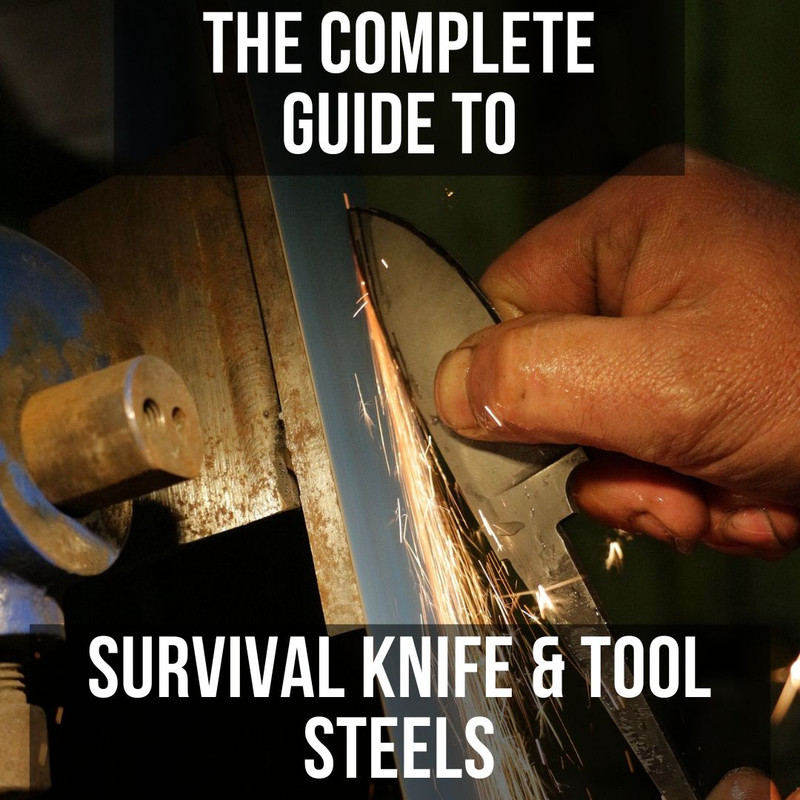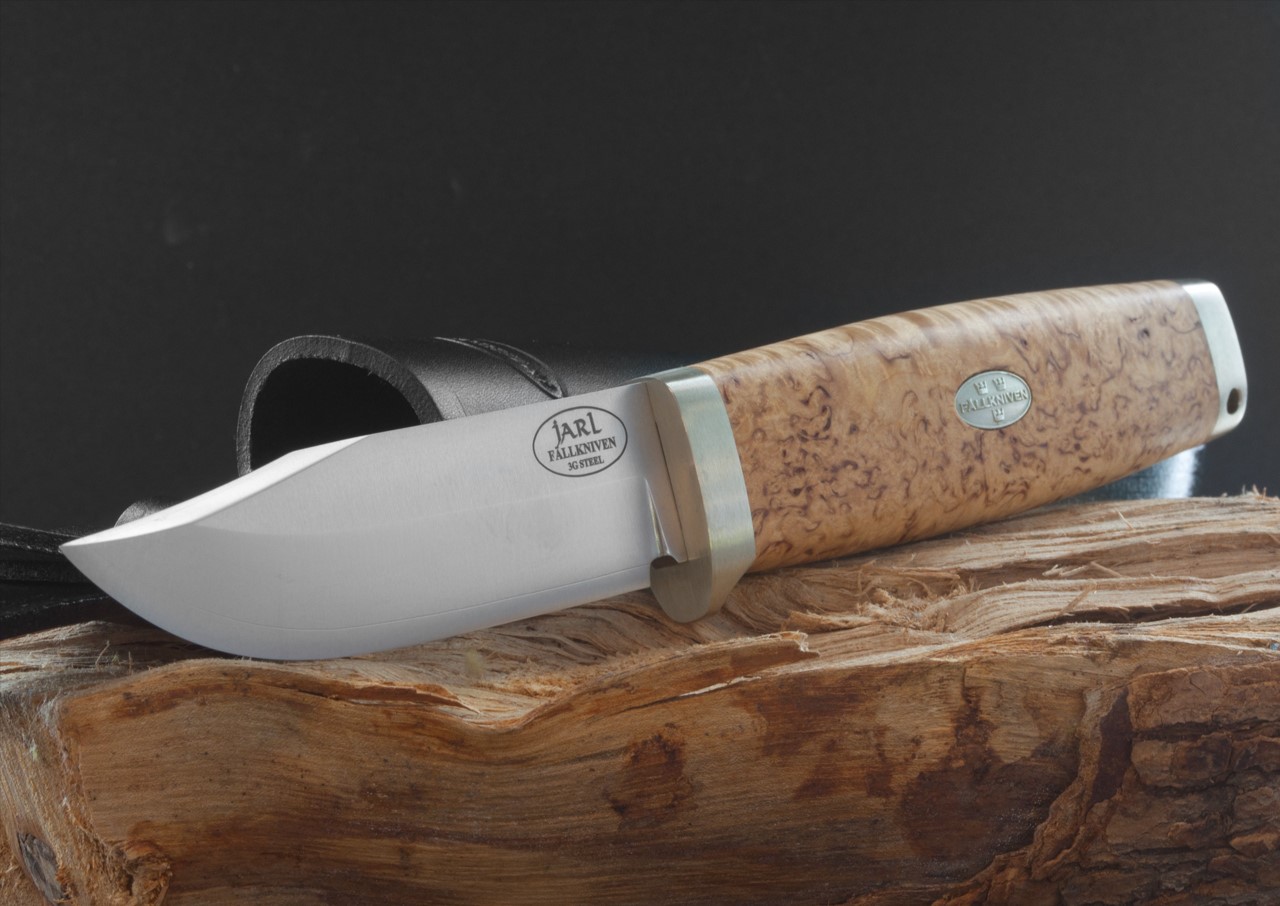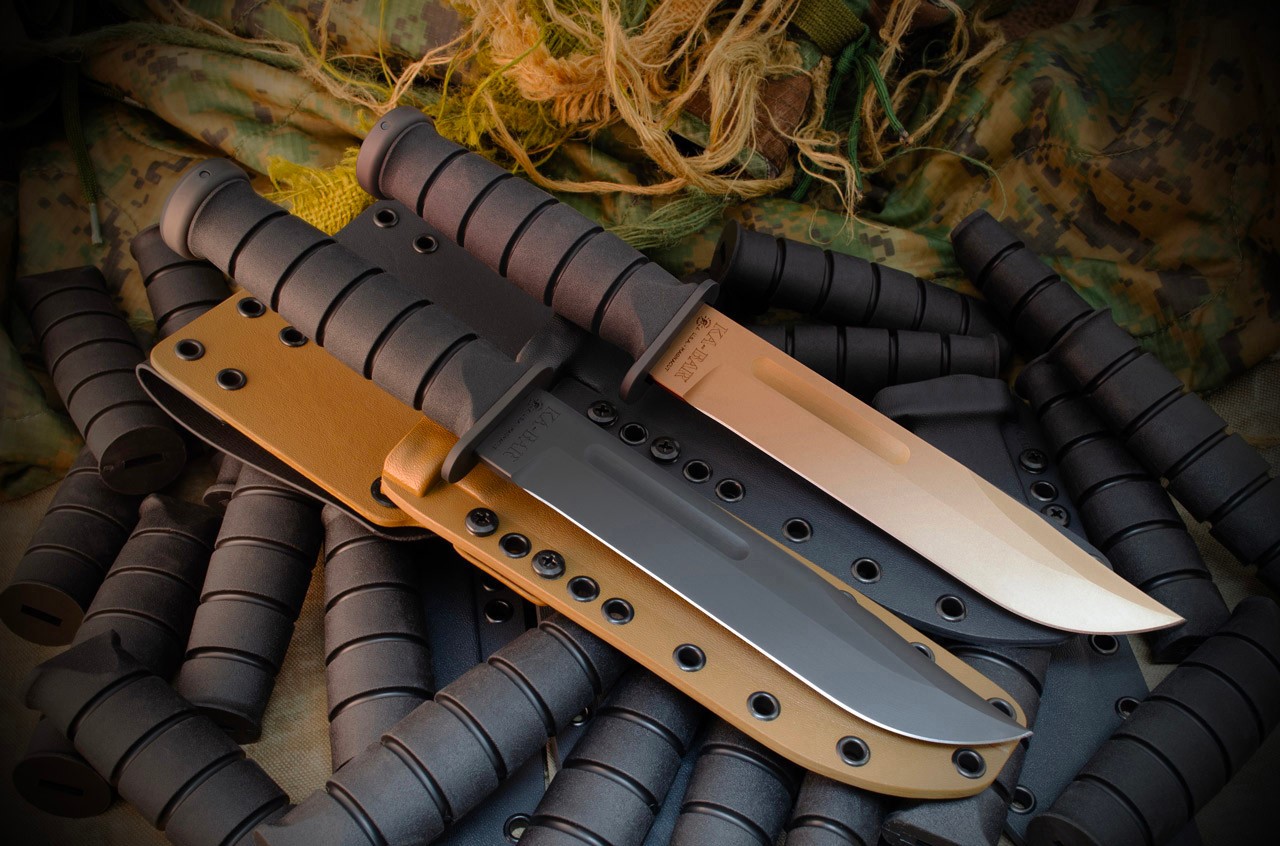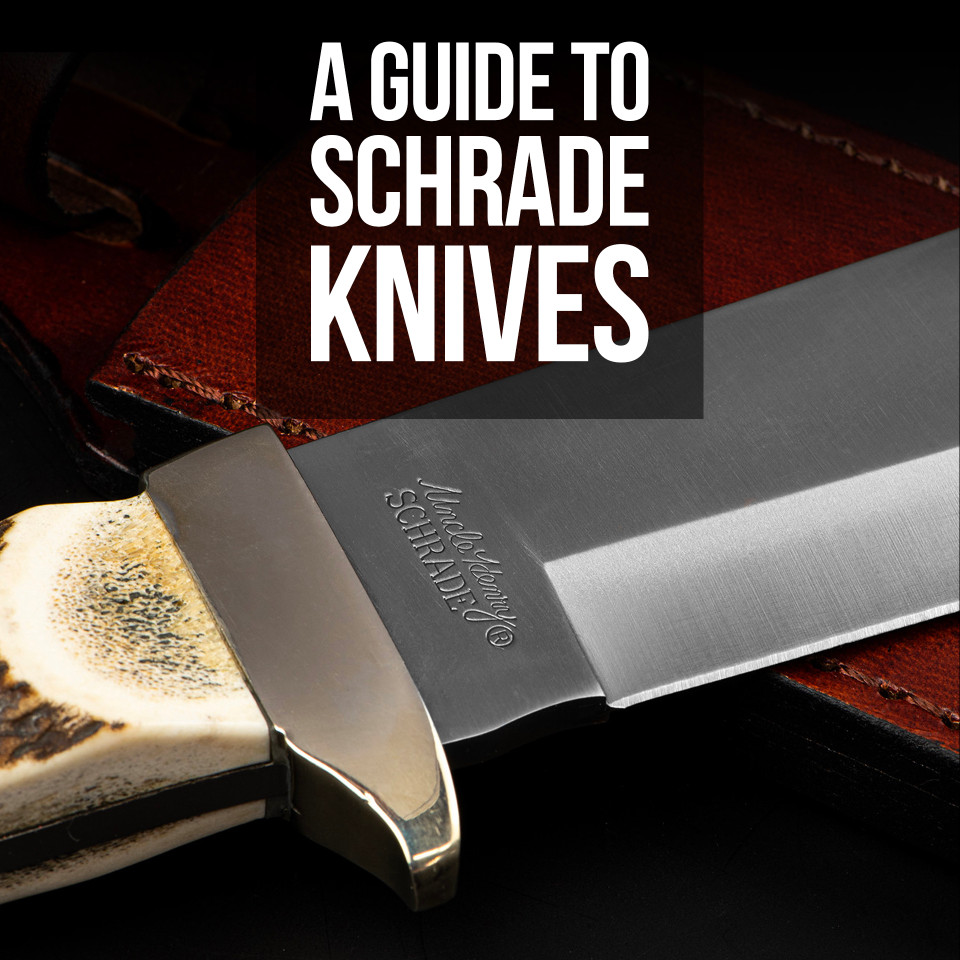The Complete Guide to Survival Knife and Tool Steels
Posted by HH on 26th Jul 2023
When it comes to picking a knife or tool, especially when seeking out one that comes with the sheer strength, reliability and heft that comes with steel, it can seem that there is a sea of choices to make.
Steel is arguably the most important aspect of a knife. After all, the cold steel is what cuts, slices and is by your side for those all-important jobs. Without it or when it is not accompanied by good quality materials, your knife will quickly blunt and become unusable.
First things first, what is steel?
It’s important to break down the fundamentals here before we start talking about various choices you can make when it comes to steel products.
Steel, by its very definition, is an alloy of iron and carbon containing less than 2% carbon and 1% manganese. It can also contain small amounts of silicon, phosphorus, sulphur and oxygen, as well as any number of other elements
There is a common misconception that steel is a singular entity. Simply put, it is not. There are thousands of different steel types, many of which have been invented or developed this side of the millennium making for continually stronger and lighter metals.
Does steel rust?
Yes it can. If you leave it exposed to water, oxygen and even dirt or a leather sheath, the steel will start to become covered in an iron oxide coating. There are ways of delaying and preventing this though.
Stainless steel is one example; although this can still rust it takes a lot longer due to the inclusion of Chromium. Other methods of reducing rust are blade coatings, these prevent oxygen from coming into contact with the blade and causing a reaction which sees the formation of rust.
Five Key Terms
When choosing a knife, there are several terms that you may see mentioned. These five terms are the fundamental characteristics you will want to look for in your blade steel:
Hardness
Some people know this as blade strength but hardness is the primary term. It essentially means that the harder the steel the less likely it is to deform/bend when stressed during use. It is generally measured using the Rockwell C scale (aka “HRC”).
Toughness
Toughness is the steel’s ability to resist damage like cracks or chips when being used in heavy duty applications. This also defines the steel’s ability to flex without breaking.
Therefore, this is very different to hardness, and in all likelihood (not always though) increased toughness means decreased hardness. However, whereas hardness has a standardised measurement there isn’t really one for toughness so it’s much harder to measure.
Wear Resistance
Wear resistance is the steel’s ability to withstand damage from both abrasive (scratches and scrapes) and adhesive wear (rubbing of the blade on a surface).
Abrasive wear comes from softer surfaces coming in contact with rougher ones. This leads to scratches and other scrapes forming on the blade. Adhesive wear occurs when debris is dislodged from one surface and attaches to the other.
Wear resistance generally correlates with the steel’s hardness but is also heavily influenced by the specific chemistry of the steel. In steels of equal hardness, the steel with larger carbides (wear resistant particles) will typically resist wear better.
Corrosion Resistance
Corrosion resistance is the ability to resist corrosion, such as rust. We’ve already briefly mentioned some of the primary culprits of corrosion, but there are more. Therefore, you should look after your knife and clean it properly (luckily there is a post for that).
Unfortunately though most of the time increased corrosion resistance means decreased edge retention and quality.
Edge Retention
Edge Retention represents how long the blade will retain its sharpness while it is being used. Edge is really important to knife performance, but unfortunately much like ‘toughness’ it’s extremely hard to measure.
This inaccuracy means every one disagrees as to what edge retention means, and how you decide whether it’s good or bad. Ultimately, each knife user will have their own opinion, and that’s what makes the knife world so interesting.The longer an edge resists being changed (deformed) the better you could say the edge retention is.
Which is best?
You tell us? People have so many preferences on what they want their knife to be able to do. Unfortunately there is no magic steel that is amazing at all five. Therefore, you have to make a decision about which is most important to you, whether it is corrosion resistance or edge retention.
Most people seem to struggle with the difference in hardness and toughness as some steels which are extremely hard can be easily chipped and vice versa. All steels even stainless will oxidise if left out in the air and in water, so always take that into consideration!
Popular Steel Types
Now some of you may complain your favourite steel may not be included below, but we’ve tried to include as many different types as possible.
As a general rule we are going to start with the most premium and high end steels, then work our way down to the cheaper and ‘lower quality’ steels. We are determining this list based on the steel cost, but really there is no exact science to quality vs quantity so bear with us. You’ll get the idea.
- Magnacut
This steel is favoured for its excellent balance of corrosion resistance, toughness, and edge retention, making it a popular choice for premium outdoor knives and gear. Excellent examples include the Spyderco Native 5 Salt Folding Knife or the amazing Spartan Blades KA-BAR Fixed Blade.
- ZDP 189
Known for its incredible edge retention and hardness, ZDP 189 steel is commonly used in high-end pocket knives and kitchen knives. An example of this is the Rockstead Ryo H ZDP or the Spyderco Endura ZDP-189.
- D2
This semi-stainless tool steel, admired for its hardness and good edge retention, is often used in hunting knives and large cutting tools. Examples of this include the Boker Plus Bowie Pocket or the Rough Rider Reserve Whittler.
- H1 / LC200N
With exceptional corrosion resistance, these steel types are predominantly used in dive knives and other marine applications. Want a look at this steel? Look no further than the Spyderco Pacific Salt 2 or the Kizer Drop Bear Folding Knife.
- Elmax
A high-chromium vanadium alloyed powdered steel, Elmax is frequently used in high-quality folding knives and fixed blades due to its superior wear and corrosion resistance. This is exemplified in knives like the Maserin Silver 410 Titanium or the Fallkniven Rl1 Elforyn Folding Knife.
- 440C
Offering a good balance of hardness, strength, and wear resistance, 440C is commonly seen in budget-friendly knives, surgical instruments, and cutlery. We stock 440C knives such as the Windeler Extra Stak Multi-Tool and the Black Fox Bean Gen 2 Micartax.
- N690
Comparable to 440C steel but with added cobalt and vanadium, N690 is commonly used in high-quality knives and surgical tools due to its excellent wear resistance and high hardness. Need a smaller knife? Check out the Fox Vulpis 3 Carbon Fibre Penknife or go larger with the Brisa Trapper 95 Scandi N690 Curly Birch Leather.
- Sandvik
Typically referring to Sandvik's range of stainless steels (like 12C27, 14C28N), these steels are widely used in kitchen cutlery, pocket knives, and other tools due to their sharpness and durability. For a survival knife, you can’t beat the Joker Ember or the Willumsen Red E Slide Lock G10 Tan.
- S30V
Renowned for its excellent edge retention and durability, S30V is a popular choice for premium pocket knives and outdoor tools. Fine examples include the Benchmade 551-S30v Griptilian Folding Knife and the Leatherman Charge +.
- 154CM
A high-carbon, high-chromium type of stainless steel, 154CM is frequently used in higher-end kitchen cutlery and survival knives due to its good edge retention and corrosion resistance. Check out the Kansept Wedge Micarta or the Kizer Serape Mini Bay G10.
- Laminated 3G
Featuring a hard, high-alloy core with softer outer layers, Laminated 3G steel is often found in premium hunting and outdoor knives for its superior edge performance and toughness. For example the Fallkniven SK1 or the maker’s LTC Series.
Knife Steel Performance Charts
Here are some rankings for edge retention, Rockwell hardness, wear resistance and corrosion resistance.
More Metal Knowledge

What exactly is a CPM Steel?
CPM stands for Crucible Particle Metallurgy which is a process for manufacturing high quality tool steels by Crucible Industries (American manufacturer).
They are the sole producer of CPM steels which are formed by pouring the molten metal through a small nozzle where high pressure gas bursts the liquid stream into a spray of tiny droplets.
These droplets are cooled, solidified into a powder form and then ‘Hot Isostatically Pressed’ (HIP) where the powder is bonded and compacted. The trick here is that the HIP process ensures each of the fine particles have a uniform composition without any alloy segregation.
All of this results in a steel that has improved toughness, wear resistance and can be ground and heat treated with maximum effect.
What is powder metallurgy?
Well you can probably guess from the name that it involves powdered metals. These are created by mixing elemental or alloy powders and compacting the mixture in a die. The resultant shapes are then heated or “sintered” in a controlled atmosphere furnace to bond the particles metallurgically.
The high precision forming capability of powder metallurgy generates components with near net shape, intricate features and good dimensional precision pieces are often finished without the need of machining.
This modern process enables manufacturers to make products that are more consistent and predictable in their behaviour across a wide range of applications.
In addition the powder metallurgy has a high degree of flexibility allowing the tailoring of the physical characteristics of a product to suit your specific property and performance requirements.
This means that different levels and combinations of elements can now be made to make better and better steels.
What does ‘laminated steel’ mean?
Laminated steel is a term you’ll often hear associated with knife blades. In basic terms it’s a metal made of different types of steel (in layers) rather than a single sheet of metal.
The reason this is done is to get the benefits of other types of steel, without compromising the make-up of the main steel. As an example the Fallkniven F1 is one of the most popular knives with a laminated blade. It has a laminated VG10 blade.
The reason for this is that it increases the toughness of the blade and can increase strength by as much as 25%. This makes the knife much better for hard-use tasks.
What about Damascus steel?
Damascus steel originates from the Middle East (now manufactured globally). It also isn’t a new steel, it’s one that’s been used for thousands of years. It’s distinctive and recognisable swirling marks rubbing through the metal. This is due to the welding of two different steels together.
These days you only really find it on top of the range mostly due to its aesthetic appeal over any actual qualities the steel possesses. Because of its cost it has become a big favourite of knife collectors.
Stainless or Carbon Steel?
It depends. Higher carbon generally means lower corrosion resistance. If you are likely to be using your blade in humid, damp, wet or rainy environments then consider stainless. If you are a fair weather user, who likes to get some heavy duty work done with the knife then carbon is where you should look.
Explore Our Knives & Axes Designed For Quality & Performance







